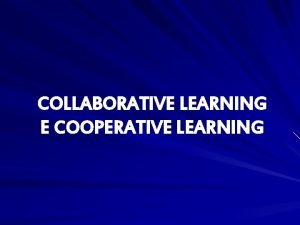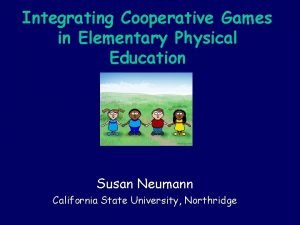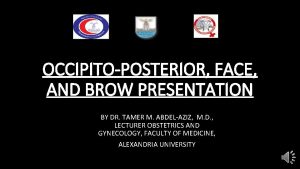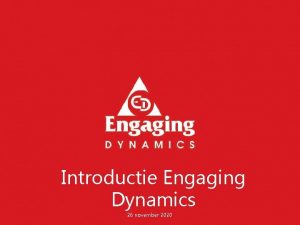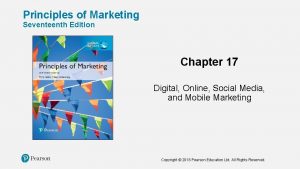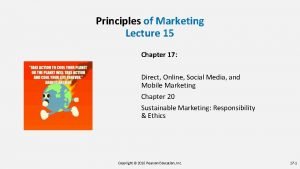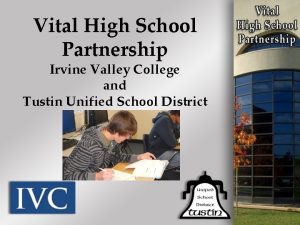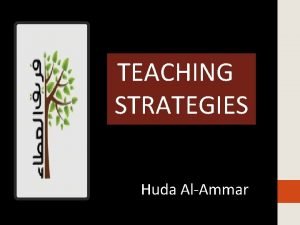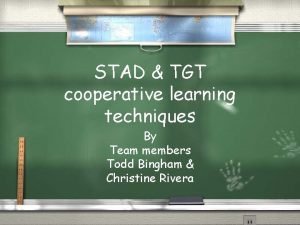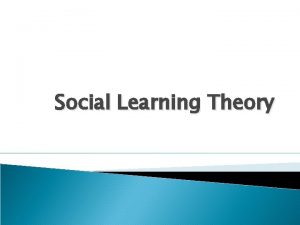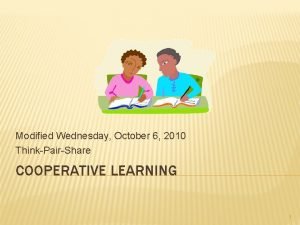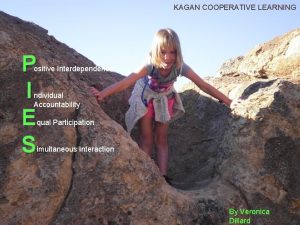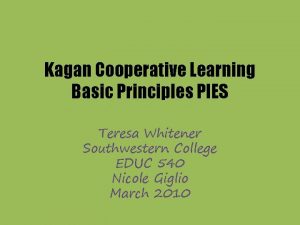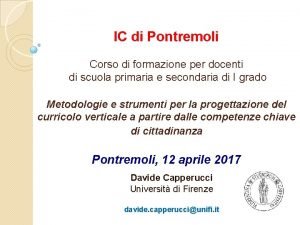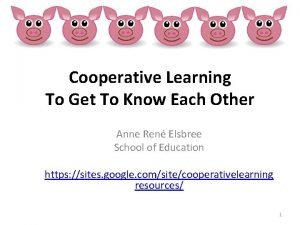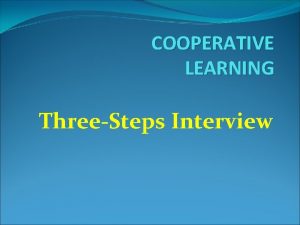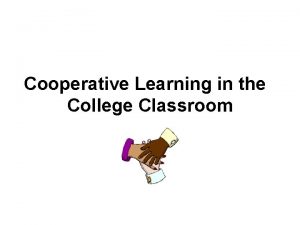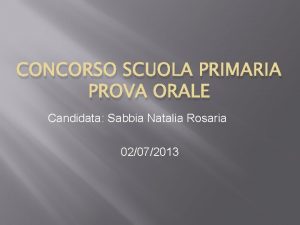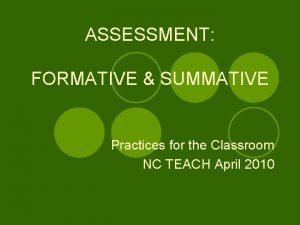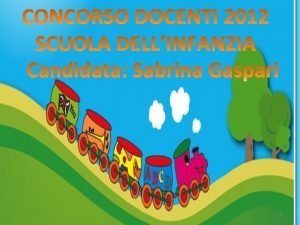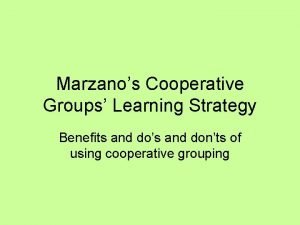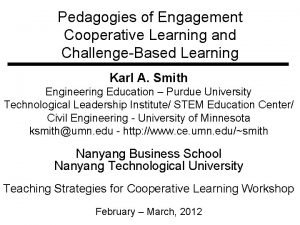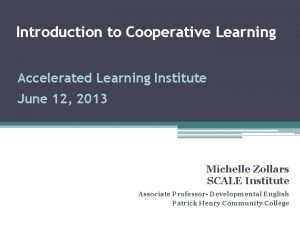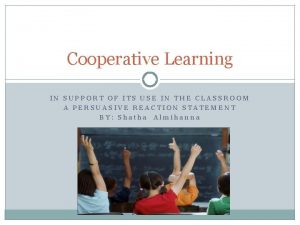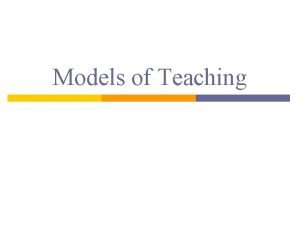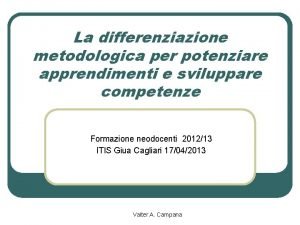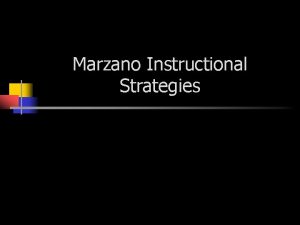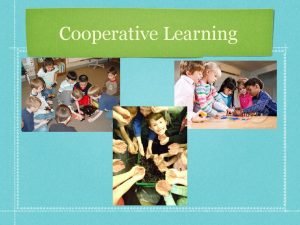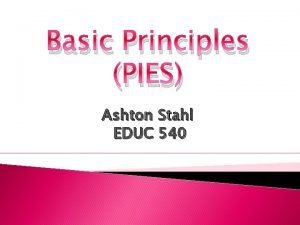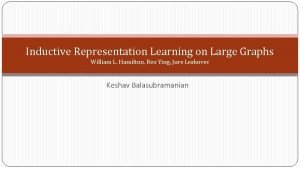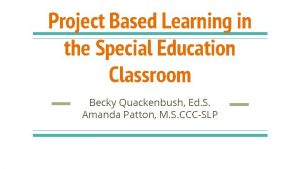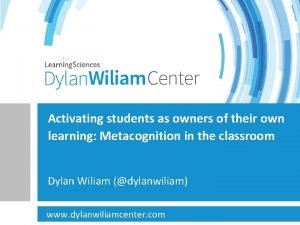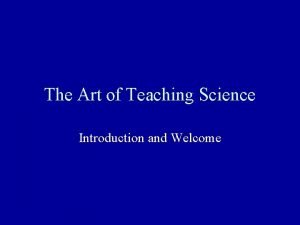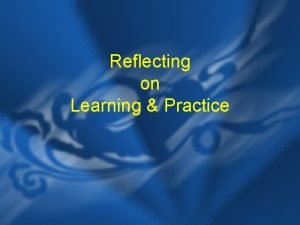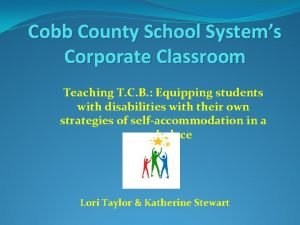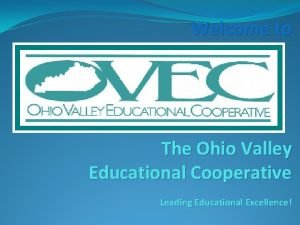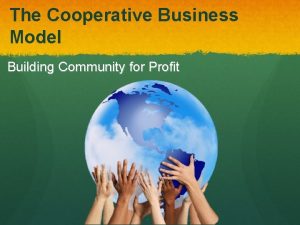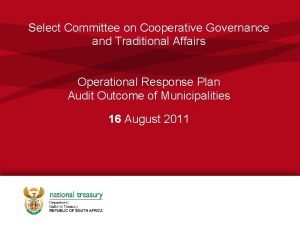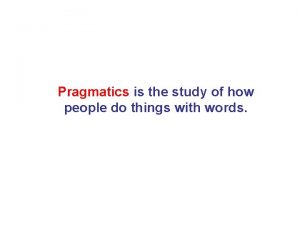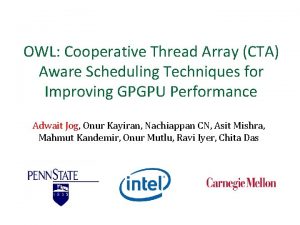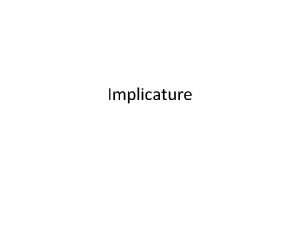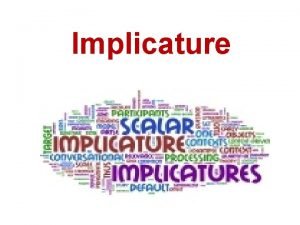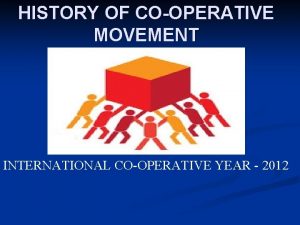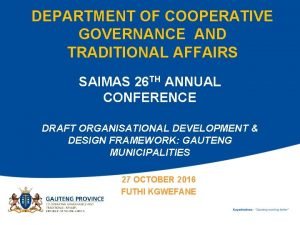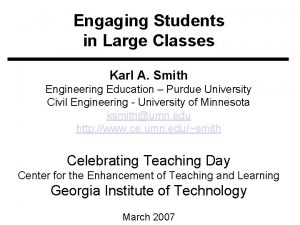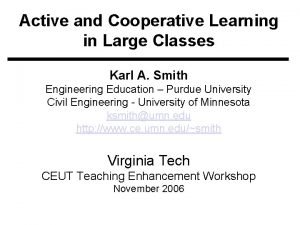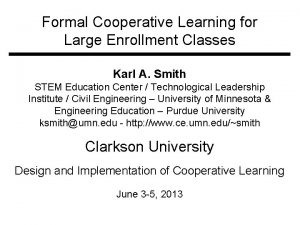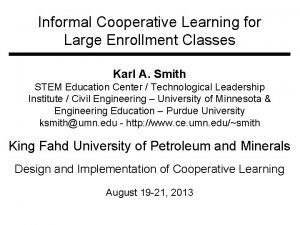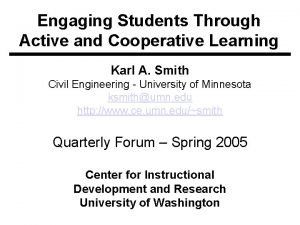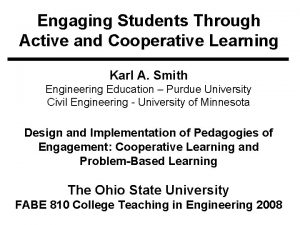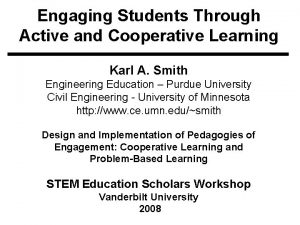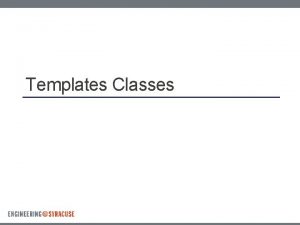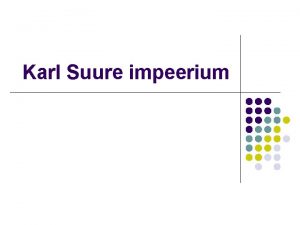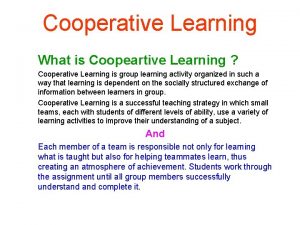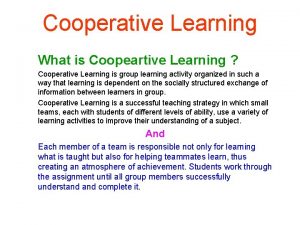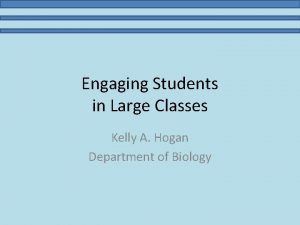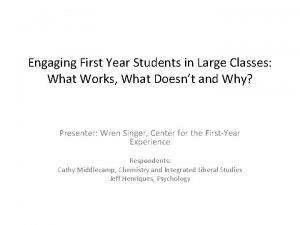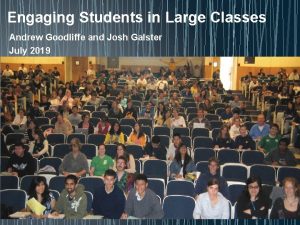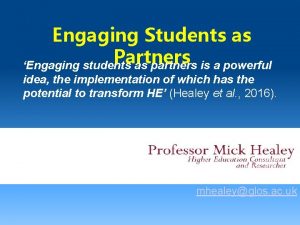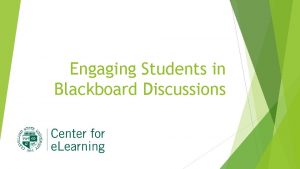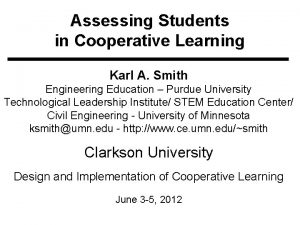Cooperative Learning Engaging Students in Large Classes Karl




















































- Slides: 52

Cooperative Learning: Engaging Students in Large Classes Karl A. Smith Engineering Education – Purdue University Civil Engineering - University of Minnesota ksmith@umn. edu http: //www. ce. umn. edu/~smith Faculty Workshop University of Illinois at Urbana-Champaign August 2007

Session Goals & Agenda • Goals & Desired Outcomes – Describe key features of cooperative learning approach for engaging students – Apply cooperative learning to classroom practice – Make connections between cooperative learning and desired outcomes of courses and programs • Knowledge • Skills • Perspective • Agenda – Review/Introduce Cooperative Learning (CL) – Key concepts of CL – Approaches for implementing CL 2

Lila M. Smith

Pedago-pathologies Amnesia Fantasia Inertia Lee Shulman – MSU Med School – PBL Approach (late 60 s – early 70 s), Currently President of the Carnegie Foundation for the Advancement of College Teaching Shulman, Lee S. 1999. Taking learning seriously. Change, 31 (4), 11 -17.

What do we do about these pathologies? – Lee Shulman Activity Reflection Collaboration Passion Combine with generative content and the creation of powerful learning communities Shulman, Lee S. 1999. Taking learning seriously. Change, 31 (4), 11 -17. 5

Formulate-Share-Listen-Create (Think-Pair-Share) • Individually read the quote “To teach is to engage students in learning. . . ” • Underline/Highlight words and/or phrases that stand out for you • Turn to the person next to you and talk about words and/or phrases that stood out 6

To teach is to engage students in learning; thus teaching consists of getting students involved in the active construction of knowledge. . . The aim of teaching is not only to transmit information, but also to transform students from passive recipients of other people's knowledge into active constructors of their own and others' knowledge. . . Teaching is fundamentally about creating the pedagogical, social, and ethical conditions under which students agree to take charge of their own learning, individually and collectively Education for judgment: The artistry of discussion leadership. Edited by C. Roland Christensen, David A. Garvin, and Ann Sweet. Cambridge, MA: Harvard Business School, 1991.

Lila M. Smith

Pedagogies of Engagement 9

Pedagogies of Engagement: Classroom-Based Practices http: //www. asee. org/about/publ ications/jee/upload/2005 jee_sa mple. htm 10

“Throughout the whole enterprise, the core issue, in my view, is the mode of teaching and learning that is practiced. Learning ‘about’ things does not enable students to acquire the abilities and understanding they will need for the twenty-first century. We need new pedagogies of engagement that will turn out the kinds of resourceful, engaged workers and citizens that America now requires. ” Russ Edgerton (reflecting on higher education projects funded by the Pew Memorial Trust) 11

Foundations for Pedagogies of Engagement 1. Learning is a social activity (John Dewey) 2. Innovative learning requires ambiguity (Stuart Pugh) 3. All learning requires un-learning (John Seely Brown) 4. Learning is situated (Jean Lave) 12

Cooperative Learning Kurt Lewin - Social Interdependence Theory (~1935) 1. The essence of a group is the interdependence among members (created by common goals) which results in the group being a "dynamic whole" so that a change in the state of any member of subgroup changes the state of any other member or subgroup 2. An intrinsic state of tension within group members motivates movement toward the accomplishment of the desired common 13 goals.

Cooperative Learning • Theory – Social Interdependence – Lewin – Deutsch – Johnson & Johnson • Research – Randomized Design Field Experiments • Practice – Formal Teams/Professor’s Role Theory Research 14 Practice

Cooperative Learning • Positive Interdependence • Individual and Group Accountability • Face-to-Face Promotive Interaction • Teamwork Skills • Group Processing 15

Shaping the Future: New Expectations for Undergraduate Education in Science, Mathematics, Engineering and Technology – National Science Foundation, 1996 Goal B All students have access to supportive, excellent undergraduate education in science, mathematics, engineering, and technology, and all students learn these subjects by direct experience with the methods and processes of inquiry. Recommend that SME&T faculty: Believe and affirm that every student can learn, and model good practices that increase learning; starting with the student=s experience, but have high expectations within a supportive climate; and build inquiry, a sense of wonder and the excitement of discovery, plus communication and teamwork, critical thinking, and 16 life-long learning skills into learning experiences.

National Research Council Reports: 1. How People Learn: Brain, Mind, Experience, and School (1999). 2. How People Learn: Bridging Research and Practice (2000). 3. Knowing What Students Know: The Science and Design of Educational Assessment (2001). 4. The Knowledge Economy and Postsecondary Education (2002). Chapter 6 – Creating High. Quality Learning Environments: Guidelines from Research on How People Learn 17

18

19

Some Important Principles About Learning and Understanding The first important principle about how people learn is that students come to the classroom with preconceptions about how the world works which include beliefs and prior knowledge acquired through various experiences. The second important principle about how people learn is that to develop competence in an area of inquiry, students must: (a) have a deep foundation of factual knowledge, (b) understand facts and ideas in the context of a conceptual framework, and (c) organize knowledge in ways that facilitate retrieval and application. A third critical idea about how people learn is that a “metacognitive” approach to instruction can help students learn to take control of their own learning by defining learning goals and monitoring their progress in achieving them. Jim Pellegrino – Rethinking and redesigning curriculum, instruction and assessment: What contemporary research and theory suggests 20

Designing Learning Environments Based on HPL (How People Learn) 21

Active Learning: Cooperation in the College Classroom • Informal Cooperative Learning Groups • Formal Cooperative Learning Groups • Cooperative Base Groups See Cooperative Learning Handout (CL College-804. doc) 22

Key Features of Cooperative Learning Active/Interactive Cooperative Personal (before professional) Structure (before task) Knee-to-Knee, Eye-to-Eye/Space/Focus Challenging task (worthy of group effort) Students talking through the material (cognitive rehearsal) Learning groups are small (2 -5) and assigned Heterogeneous Your own cooperative group 23

Cooperative Learning is instruction that involves people working in teams to accomplish a common goal, under conditions that involve both positive interdependence (all members must cooperate to complete the task) and individual and group accountability (each member is accountable for the complete final outcome). Key Concepts • Positive Interdependence • Individual and Group Accountability • Face-to-Face Promotive Interaction • Teamwork Skills • Group Processing

Individual & Group Accountability • ? 25

Cooperative Learning: Key Concepts • Positive Interdependence • Individual and Group Accountability • Face-to-Face Promotive Interaction • Teamwork Skills • Group Processing 26

Active Learning: Cooperation in the College Classroom • Informal Cooperative Learning Groups • Formal Cooperative Learning Groups • Cooperative Base Groups See Cooperative Learning Handout (CL College-804. doc) 27

Book Ends on a Class Session 28

Book Ends on a Class Session 1. Advance Organizer 2. Formulate-Share-Listen-Create (Turn-to -your-neighbor) -- repeated every 10 -12 minutes 3. Session Summary (Minute Paper) 1. What was the most useful or meaningful thing you learned during this session? 2. What question(s) remain uppermost in your mind as we end this session? 3. What was the “muddiest” point in this session?

Advance Organizer “The most important single factor influencing learning is what the learner already knows. Ascertain this and teach him accordingly. @ David Ausubel - Educational psychology: A cognitive approach, 1968. 30

Quick Thinks • Reorder the steps • Paraphrase the idea • Correct the error • Support a statement • Select the response Johnston, S. & Cooper, J. 1997. Quick thinks: Activethinking in lecture classes and televised instruction. Cooperative learning and college teaching, 8(1), 2 -7. 31

Formulate-Share-Listen-Create Informal Cooperative Learning Group Introductory Pair Discussion of a FOCUS QUESTION 1. Formulate your response to the question individually 2. Share your answer with a partner 3. Listen carefully to your partner's answer 4. Work together to Create a new answer through discussion 32

Minute Paper • What was the most useful or meaningful thing you learned during this session? • What question(s) remain uppermost in your mind as we end this session? • What was the “muddiest” point in this session? • Give an example or application • Explain in your own words. . . Angelo, T. A. & Cross, K. P. 1993. Classroom assessment techniques: A handbook for college teachers. San Francisco: Jossey Bass. 33

Session Summary (Minute Paper) Reflect on the session: 1. What were the most important points for you? 2. What is one thing you would be willing to try? 3. What questions do you have? 4. Pace: Too slow 1. . 5 Too fast 5. Relevance: Little 1. . . 5 Lots 6. Format: Ugh 1. . . 5 Ah 34

USU – August 24, 2006 – Session 1 (am) Q 4 – Pace: Too slow 1. . 5 Too fast Q 5 – Relevance: Little 1. . . 5 Lots Q 6 – Format: Ugh 1. . . 5 Ah 35

MOT 8221 – Spring 2007 – Session 1 Q 4 – Pace: Too slow 1. . 5 Too fast Q 5 – Relevance: Little 1. . . 5 Lots Q 6 – Format: Ugh 1. . . 5 Ah

Session 1 Comments • • • • Most interesting – 1 st class where we broke up into new groups and worked on a fun and engaging project. It’s a completely new format of class for me Relevance of PM/KM across a wide range of businesses, exposure to PM literature and resources Group project – short project highlighted interesting group dynamics. . Most interesting as it provided hands on experience [mentioned by many] Relate project management concepts to everyday tasks. Engineering project and relating it to PM Intro to KM. KM concepts and knowing that we will be looking at what these concepts are [mentioned by many] Interactive learning is useful. I like the active interaction Where to find out more information about PM. Learning more about PM. Overview of the books and their relevance [mentioned by many] The pain curve The scope of the course helped That you can’t expect to get all 3 (cost, time & performance) Other aspects exist for PM. Different schools of thoughts on PM Distributed intelligence concepts The volume of material is probably not going to allow as much in depth detail into certain areas Not addressed/ Questions – project management modeling techniques • • • • • • • • Relate resource management to project management when resources are shared Looking forward to further dialogue, especially concerning adaptive and extreme project mgmt. More input on extreme PM. [mentioned by many] I would suggest a better lead into the group project. Discuss the skills, then practice in group Like to see best practice to handle different situations in the project management life cycle History of PM To understand PM/KM in more depth. More on KM. More PM info. No questions yet, looking forward to next class Virtual team management, Technical project vs non-technical PM There seems to be many forms/templates that are in the book. But they don’t say why or what value they serve after the project is over or later on in the project Papers and course expectations seem complex Understand some of the problems that occur during project planning A comparison of the various types of projects, e. g. , construction, engineering, software More info on R&D/innovation mgmt. More detail around resource conflicts Other comments – went a bit fast – probably due to the complexity & content (amount), regarding course assignment overview Great deal of literature listed in syllabus – maybe too much I enjoyed it. Great start. Good starting class. Refreshing class structure. I liked the exercise. Liked the hands-on exercise PERT/CPM example to be included? Print out of slides helpful but would like online before class [slides were posted about 2 days prior] Will we learn about specification writing We could use some real world PM case studies The quote “tomorrow’s corp. is a collection of projects” seems, in my long experience, very inaccurate More background on BR & IPP would be helpful Felt some reading rehashed some points It was a very useful session – learned about basic concepts of PM from the “tower” exercise I can grasp the concepts easily More hands on and group work Scope seems too broad as indicated by readings (lots) and comments of skimming or skipping portions

Informal CL (Book Ends on a Class Session) with Concept Tests Physics Peer Instruction Eric Mazur - Harvard B http: //galileo. harvard. edu Peer Instruction – www. prenhall. com Richard Hake – http: //www. physics. indiana. edu/~hake/ Chemistry Concep. Tests - UW Madison B www. chem. wisc. edu/~concept Video: Making Lectures Interactive with Concep. Tests Modular. Chem Consortium B http: //mc 2. cchem. berkeley. edu/ STEMTEC Video: How Change Happens: Breaking the ATeach as You Were Taught@ Cycle B Films for the Humanities & Sciences B www. films. com Harvard Thinking Together & From Questions to Concepts Interactive Teaching in Physics: Derek Bok Center B www. fas. harvard. edu/~bok_cen/ 38

Richard Hake (Interactive engagement vs traditional methods) http: //www. physics. indiana. edu/~hake/ Traditional (lecture) Interactive (active/cooperative) <g> = Concept Inventory Gain/Total

40

The “Hake” Plot of FCI 35. 00 SDI 30. 00 X ALS UMn-CL+PS WP 25. 00 20. 00 UMn Cooperative Groups 15. 00 X PI(HU) UMn Traditional ASU(nc) 10. 00 WP* ASU(c) HU 5. 00 0. 00 20. 00 30. 00 40. 00 50. 00 41 (Percent) Pretest 60. 00 70. 00 80. 00

Physics (Mechanics) Concepts: The Force Concept Inventory (FCI) • A 30 item multiple choice test to probe student's understanding of basic concepts in mechanics. • The choice of topics is based on careful thought about what the fundamental issues and concepts are in Newtonian dynamics. • Uses common speech rather than cueing specific physics principles. • The distractors (wrong answers) are based on students' common inferences. 42

Informal Cooperative Learning Groups Can be used at any time Can be short term and ad hoc May be used to break up a long lecture Provides an opportunity for students to process material they have been listening to (Cognitive Rehearsal) Are especially effective in large lectures Include "book ends" procedure Are not as effective as Formal Cooperative Learning or Cooperative Base Groups

Cooperative Learning Research Support Johnson, D. W. , Johnson, R. T. , & Smith, K. A. 1998. Cooperative learning returns to college: What evidence is there that it works? Change, 30 (4), 26 -35. • Over 300 Experimental Studies • First study conducted in 1924 • High Generalizability • Multiple Outcomes 1. Achievement and retention 2. Critical thinking and higher-level reasoning 3. Differentiated views of others 4. Accurate understanding of others' perspectives 5. Liking for classmates and teacher 6. Liking for subject areas 7. Teamwork skills

Small-Group Learning: Meta-analysis Springer, L. , Stanne, M. E. , & Donovan, S. 1999. Effects of small-group learning on undergraduates in science, mathematics, engineering, and technology: A metaanalysis. Review of Educational Research, 69(1), 21 -52. Small-group (predominantly cooperative) learning in postsecondary science, mathematics, engineering, and technology (SMET). 383 reports from 1980 or later, 39 of which met the rigorous inclusion criteria for meta-analysis. The main effect of small-group learning on achievement, persistence, and attitudes among undergraduates in SMET was significant and positive. Mean effect sizes for achievement, persistence, and attitudes were 0. 51, 0. 46, and 0. 55, respectively.

Strategies for Energizing Large Classes: From Small Groups to Learning Communities: Jean Mac. Gregor, James Cooper, Karl Smith, Pamela Robinson New Directions for Teaching and Learning, No. 81, 2000. Jossey- Bass

Formal Cooperative Learning Task Groups

Formal Cooperative Learning – Types of Tasks 1. Jigsaw – Learning new conceptual/procedural material 2. Peer Composition or Editing 3. Reading Comprehension/Interpretation 4. Problem Solving, Project, or Presentation 5. Review/Correct Homework 6. Constructive Academic Controversy 7. Group Tests

Challenged-Based Learning • • • Problem-based learning Case-based learning Project-based learning Learning by design Inquiry learning Anchored instruction John Bransford, Nancy Vye and Helen Bateman. Creating High-Quality Learning Environments: Guidelines from Research on How People Learn 49

Professor's Role in Formal Cooperative Learning 1. Specifying Objectives 2. Making Decisions 3. Explaining Task, Positive Interdependence, and Individual Accountability 4. Monitoring and Intervening to Teach Skills 5. Evaluating Students' Achievement and Group Effectiveness 50

Problem Based Cooperative Learning Format TASK: Solve the problem(s) or Complete the project. INDIVIDUAL: Estimate answer. Note strategy. COOPERATIVE: One set of answers from the group, strive for agreement, make sure everyone is able to explain the strategies used to solve each problem. EXPECTED CRITERIA FOR SUCCESS: Everyone must be able to explain the strategies used to solve each problem. EVALUATION: Best answer within available resources or constraints. INDIVIDUAL ACCOUNTABILITY: One member from your group may be randomly chosen to explain (a) the answer and (b) how to solve each problem. EXPECTED BEHAVIORS: Active participating, checking, encouraging, and elaborating by all members. INTERGROUP COOPERATION: Whenever it is helpful, check procedures, 51 answers, and strategies with another group.

Cooperative Base Groups • Are Heterogeneous • Are Long Term (at least one quarter or semester) • Are Small (3 -5 members) • Are for support • May meet at the beginning of each session or may meet between sessions • Review for quizzes, tests, etc. together • Share resources, references, etc. for individual projects • Provide a means for covering for absentees 52
 Collaborative learning vs cooperative learning
Collaborative learning vs cooperative learning Cooperative recess games
Cooperative recess games Brow presentation
Brow presentation Dynamisch verbinden
Dynamisch verbinden Marketing involve engaging directly with carefully targeted
Marketing involve engaging directly with carefully targeted Marketing involve engaging directly with carefully targeted
Marketing involve engaging directly with carefully targeted Classes e subclasses de palavras 10 ano
Classes e subclasses de palavras 10 ano Pre ap classes vs regular classes
Pre ap classes vs regular classes Ivc summer classes for high school students
Ivc summer classes for high school students Cooperative vs collaborative learning
Cooperative vs collaborative learning Tgt cooperative learning
Tgt cooperative learning Social definition
Social definition Pedagogia non direttiva rogers
Pedagogia non direttiva rogers Think pair share cooperative learning
Think pair share cooperative learning Kagan pies
Kagan pies Kagan pies
Kagan pies Iccamigliano
Iccamigliano Pigs face cooperative learning
Pigs face cooperative learning Three step interview kagan
Three step interview kagan Examples of cooperative learning
Examples of cooperative learning Griglia di osservazione cooperative learning
Griglia di osservazione cooperative learning Evaluation continuum
Evaluation continuum Griglia di osservazione cooperative learning
Griglia di osservazione cooperative learning Marzano cooperative learning
Marzano cooperative learning Formal cooperative learning
Formal cooperative learning Cooperative learning institute
Cooperative learning institute Types of cooperative learning
Types of cooperative learning Models of teaching
Models of teaching Laboratory method of teaching
Laboratory method of teaching Classificazione delle metodologie didattiche
Classificazione delle metodologie didattiche Marzano instructional strategies
Marzano instructional strategies Formal cooperative learning
Formal cooperative learning Cooperative learning round robin
Cooperative learning round robin Pies prensiles
Pies prensiles Marian congregation rizal
Marian congregation rizal Cuadro comparativo de e-learning b-learning y m-learning
Cuadro comparativo de e-learning b-learning y m-learning William l hamilton
William l hamilton Project based learning for students with special needs
Project based learning for students with special needs Activating students as owners of their own learning
Activating students as owners of their own learning Learning targets helping students aim for understanding
Learning targets helping students aim for understanding Students reflection on their learning sample
Students reflection on their learning sample Students reflection on their learning sample
Students reflection on their learning sample At cobb middle school students with learning disabilities
At cobb middle school students with learning disabilities Ohio valley educational cooperative
Ohio valley educational cooperative Cooperative model example
Cooperative model example Cooperative governance
Cooperative governance The quality maxim
The quality maxim Cooperative thread array
Cooperative thread array Functional industrial estates
Functional industrial estates Implicature
Implicature Implicature and explicature in pragmatics
Implicature and explicature in pragmatics Karve committee on cooperative principles
Karve committee on cooperative principles Cooperative governance
Cooperative governance
